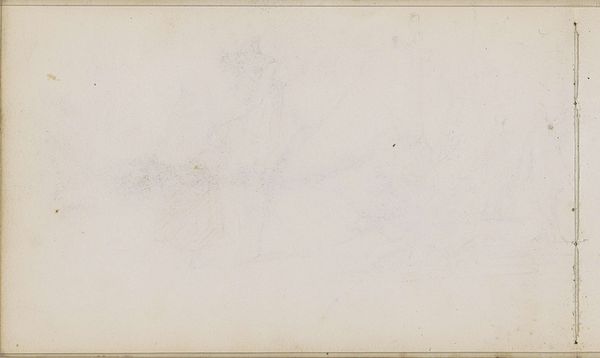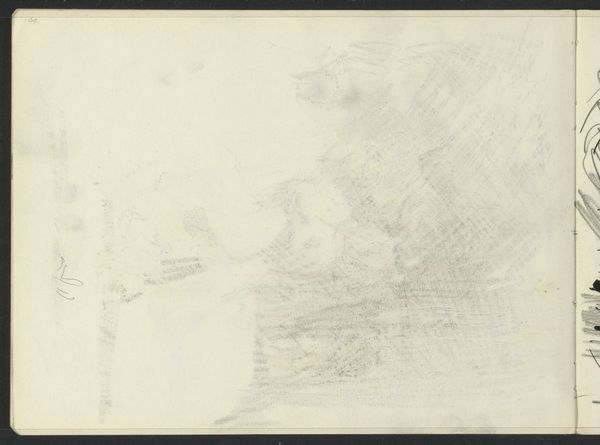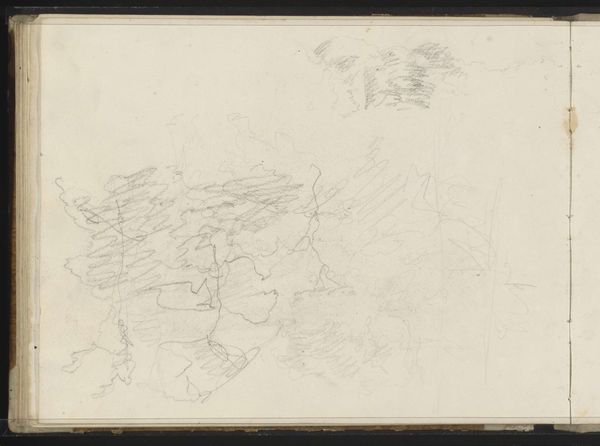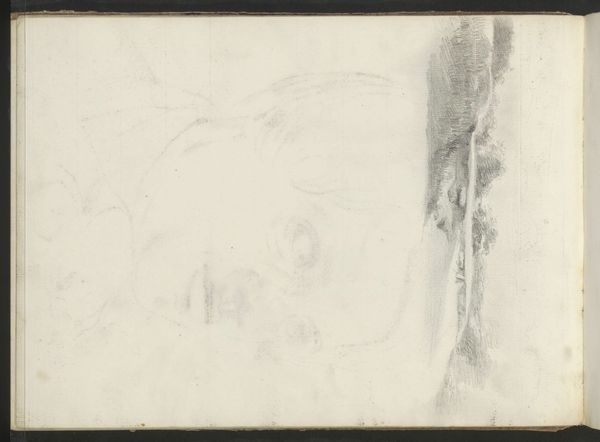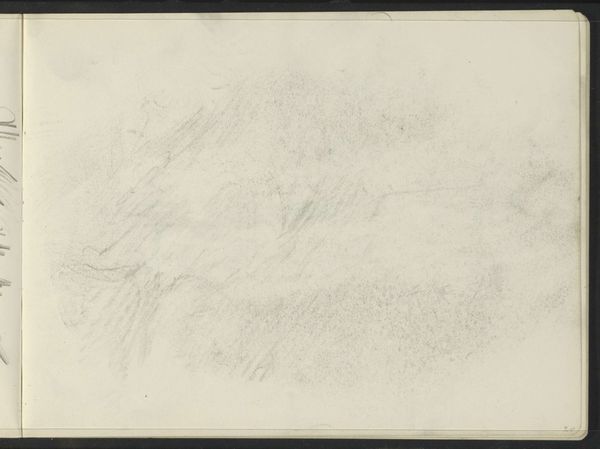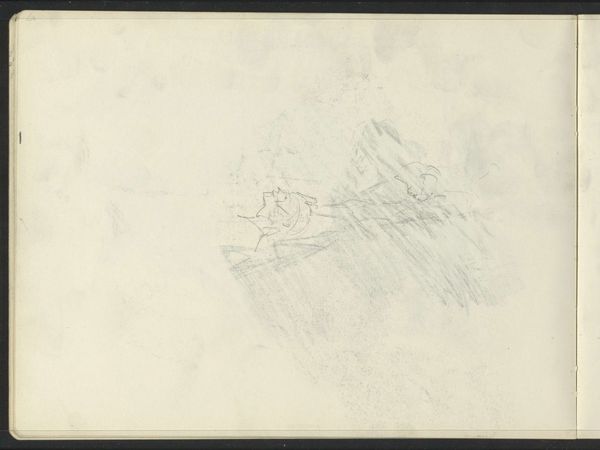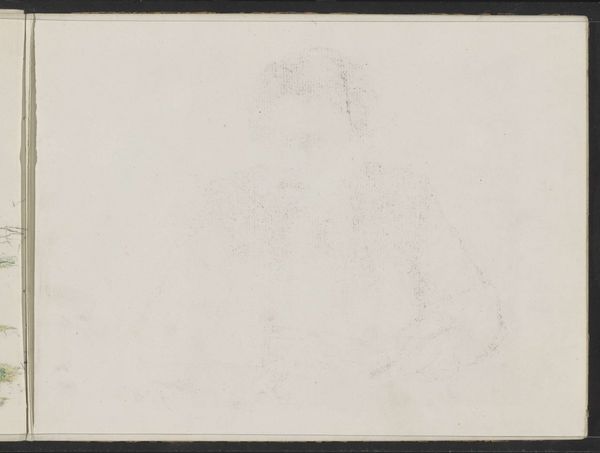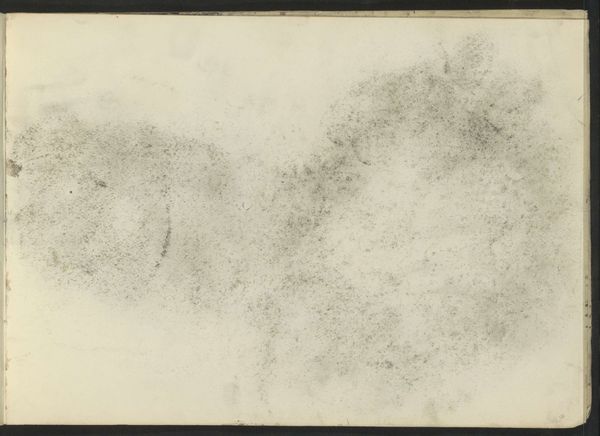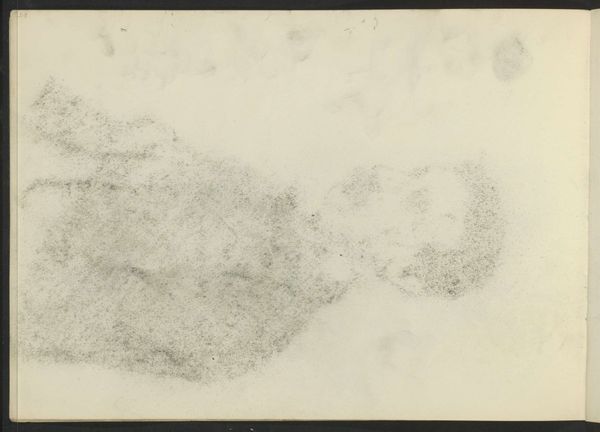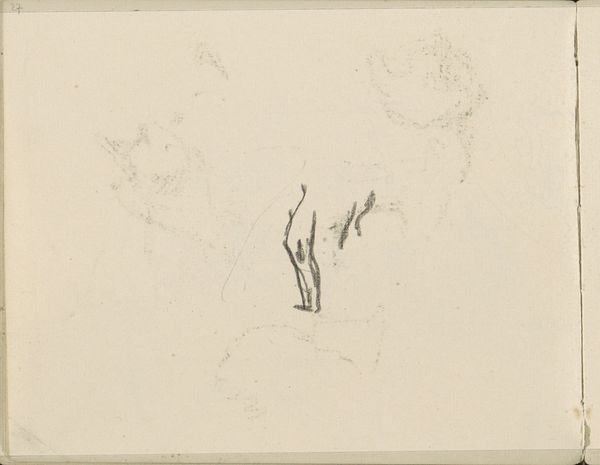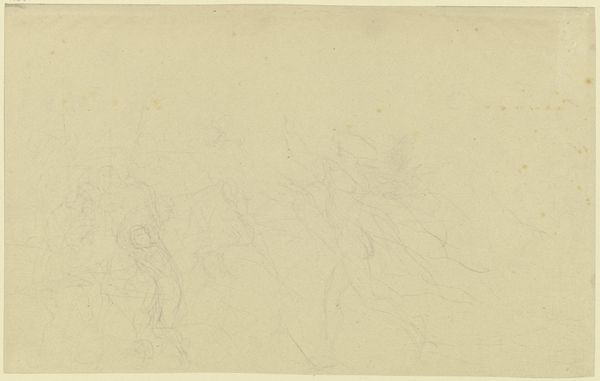
Copyright: Rijks Museum: Open Domain
Curator: Let's explore "Abklatsch van de krijttekening op blad 9 verso", a graphite and pencil drawing on paper by Isaac Israels, created sometime between 1886 and 1934. Editor: It strikes me as incredibly ephemeral. Almost ghost-like. The smudging and light touch make it feel as though these figures could vanish any second. Who are they? What's the setting? Curator: It's thought to be a "reversal" – literally, a transferred image – of a chalk drawing found on the back of sheet 9 of a sketchbook. The Rijksmuseum holds this compelling piece. The technique allows us to examine not only the direct impression but also its inverse, inviting considerations about the process of creation and reproduction. Editor: The very process you describe suggests layers of meaning and hidden identities. Who gets to be seen and how? Is this elusiveness intentional, perhaps a commentary on the transient nature of performance or perhaps even memory? It speaks to ideas of the erased or the forgotten. Curator: You bring up interesting points regarding who or what gets emphasized through this medium. In portraiture of the period, emphasis was traditionally placed on capturing not just likeness but character and social standing, which depended on the subject's position within society. Yet, here, Israels seems less concerned with those details. This ghostly portrayal evokes a more democratic and fluid depiction of its subjects. Editor: Yes! And in that fleeting image, don't you see the underrepresentation of specific communities within broader historical narratives of art? Whose stories don't survive the transition, the "reversal," the reproduction? That perhaps is a powerful, albeit subtle, activist statement embedded in its apparent sketchiness. It prompts conversations about historical documentation. Curator: Fascinating to connect the medium with that broader theme of selective preservation. The work may unintentionally comment on the complexities of visibility and erasure in historical records. It reflects how what we consider definitive or canonized often emerges from multiple, often obscured processes of selection. It echoes forward through movements such as Surrealism and Conceptual art, continuing dialogues on reproduction. Editor: Absolutely, considering the power dynamics inherent in what society deems worthy of remembering versus what it discards. The work's delicate execution serves as an emblem of lost narratives and silenced voices.
Comments
No comments
Be the first to comment and join the conversation on the ultimate creative platform.

